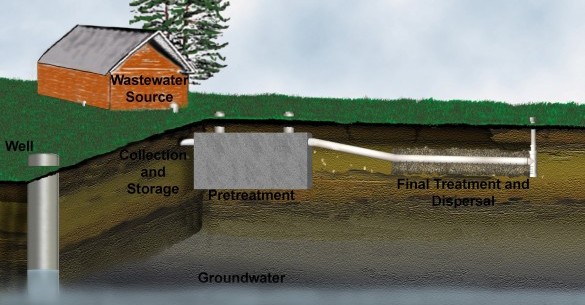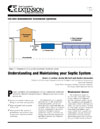Onsite (or decentralized) wastewater treatment systems are used to treat wastewater from a home or business and return treated wastewater back into the receiving environment. They are typically referred to as septic systems, because most involve a septic tank for partial treatment.
The most common and traditional septic systems consist of a septic tank that gravity flows to a soil adsorption field for final treatment and dispersal. The septic tank allows particulate matter to settle to the bottom of the tank so that large solids do not plug the drain field. An effluent screen placed in the outlet of the septic tank is used to filter suspended solids out of the effluent. Final treatment and dispersal of the wastewater takes place in the soil adsorption filed.
A non-traditional system performs the same basic actions as the conventional septic systems. Differences arise when location, space, laws and regulations, soil type, and/or quantity of wastewater being treated become a limiting factor. A non-traditional system in this case refers to any OWTS that uses pumps or advanced treatment. These systems use technologies that require greater frequency of operation and maintenance.
An OWTS can be divided 4 main components:
1. Wastewater Source
2. Collection and Storage
3. Pretreatment Components
4. Final Treatment and Dispersal Components
Pretreatment has two main categories:
1. Advanced Pretreatment
2. Disinfection
OSSF Maintenance Basics
How to Check and Maintain a Conventional (Anaerobic) OSSF System
How to Check and Maintain an Aerobic OSSF System
Related Resources
![]() Interactive tool: How a septic system works
Interactive tool: How a septic system works
 Operation and Maintenance Checklist: System Description
Operation and Maintenance Checklist: System Description
 Operation and Maintenance Checklist: System Evaluation
Operation and Maintenance Checklist: System Evaluation

